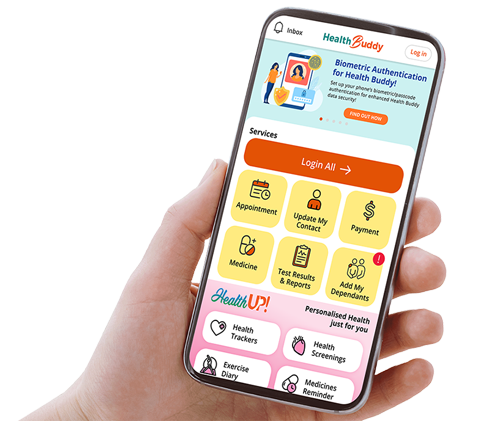KK Women's and Children's Hospital will NEVER ask you to transfer money over a call. If in doubt, call the 24/7 ScamShield helpline at 1799, or visit the ScamShield website at www.scamshield.gov.sg.
Obstetrics
Eclampsia Rates
Pre-eclampsia and eclampsia are diseases in pregnancy, which contribute significantly to maternal and foetal mortality and morbidity. Severe pre-eclampsia poses substantial risks for the obstetric patient and her baby. Utero-placental perfusion is severely compromised, which puts the fetus at high risk for problems such as pre-term birth and perinatal mortality. It may also lead to severe maternal hypertension and multi-systemic organ dysfunction and damage, including eclampsia and abruption placentae.
The incidence of eclampsia in KKH has dropped significantly from 101.3 per 100,000 births in 1995 to 6.9 per 100,000 deliveries in 2004. This rate is likely to be the lowest for a tertiary maternity hospital. The implementation of improvement strategies for the reduction of eclampsia, and an introduction of regular medical education for doctors involved in antenatal care of pre-eclampsia, have led to this low rate.
| Period | 1955 | 1957 | 1968 | 1981 | 1990-1993 | 1994-1999 | 1999-2003 |
| Incidence per 100,000 deliveries | 337.5 | 288.4 | 140 | 33.1 | 45.3 | 67.2 | 16.2 |
| Risk of Eclampsia | 1:296 | 1:348 | 1:715 | 1:3025 | 1:2270 | 1:1489 | 1:6160 |
| Maternal Mortality - (%) | 7.8 | - | - | - | 3.7 | 1.6 | 0 |
| Perinatal Mortality - (%) | 26 | - | - | - | - | 9.7 | 0 |
Cesarean Section in KKH
KKH's Cesarean section rate in 2005 was 27%, lower than most hospitals in Singapore.
In 1995, the Royal College of Obstetrics and Gynaecology published an organisational standard for maternity service in which they proposed a maximum 30-minute interval time between the decision and time of delivery for urgent Caesarean sections.
In 1997, KKH established a protocol named < Code Green > for extremely urgent Caesarean section (“crash” CS). Once the decision for “crash” CS was made, a public announcement system was used to activate the obstetrician, the anaesthetist, the neonatologist as well as the operating theatre staff that a “crash” CS was required.
Following this protocol, an internal audit was conducted by the hospital from February 2003 to February 2004 and it revealed that the hospital was able to achieve 100% of deliveries within 30mins with the < Code Green > protocol, reliably achieving the standards laid down by the Royal College of Obstetrics and Gynaecology.
| Results | 1988 (1 year audit) | 2003 (6 months audit) |
| Total no. of deliveries | 16,267 | 7,512 |
| Total no. of caesarean sections | 3,367 | 1,728 |
| Crash Caesarean | 113 | 45 |
| Mean Delivery Time (mins) | 14.9 | 7.5 |
| Patients delivered < 30 mins | 112/113 | 45/45 |
KKH successfully performs the first paediatric Transoral Robotic Surgery (TORS) for obstructive sleep apnea (OSA) in Singapore
Paediatric Sleep Apnea is a type of sleep disorder, characterised by difficulty in breathing during sleep. A paediatric patient that had previously undergone an adenotonsillectomy to treat OSA, experienced returning symptoms. Further assessment revealed an obstruction at the tongue base – an area which has difficult access and a high risk of bleeding, posing a challenge for surgical intervention.
By combining the dexterity of a robot with the skills of the surgeon and modifying the types of instrumentation to be used with the robotic arm, the KKH team successfully carried out TORS of the tongue base to treat the child's OSA. The patient consequently experienced complete resolution of symptoms and normalisation of sleep study results.
The robotic surgery was performed using the da Vinci surgical robotic system, which features high-definition three-dimensional imaging and articulated arms, allowing for precise surgical manipulation within the narrow confines of the child's mouth. The visualisation of the tissue planes and access to the surgical site that this approach allows the surgeon to perform a more complete assessment and precise resection of tissue in a very limited space. This translates to minimised blood loss and better post-operative outcomes.
Read more at: 01_SD_Jul-Aug2014.pdf (kkh.com.sg)
- Clinical Outcomes
- KK Breast Centre
- KK Gynaecological Cancer Centre
- KKIVF Centre
- Obstetrics
- KK Urogynaecology Centre
- Complication Rate after Dermatological Procedure
- Rates of Respiratory Adverse Events during Procedural Sedation
- Glycaemic control in children and young people with type 1 diabetes
- Paediatric Gastrointestinal Endoscopy Clinical Outcomes
- Transplant & Leukemia Survival Rates
- International Clinical Outcomes for Neonatals
- Systemic Lupus Erythematosus Outcome - 5 and 10 year survival rates of patients with Lupus Nephritis
- Post-Tonsillectomy and post-adenoidectomy Hemorrhage in Children
- Negative Appendectomy vs Preoperative CT Scan
- Complicated Appendicitis Complication Rates
- Scoliosis Neurological Deficit and Death Rates
- Diagnostic and Interventional Imaging
- Success Rate of Air Enema Reduction under Fluoroscopy Guidance
- Women’s Anaesthesia
- Percentage of Patients with Failed Regional Anaesthesia for Obstetric and Gynaecological Operations
- Carbapenem Appropriateness
Stay Healthy With
© 2025 SingHealth Group. All Rights Reserved.
















